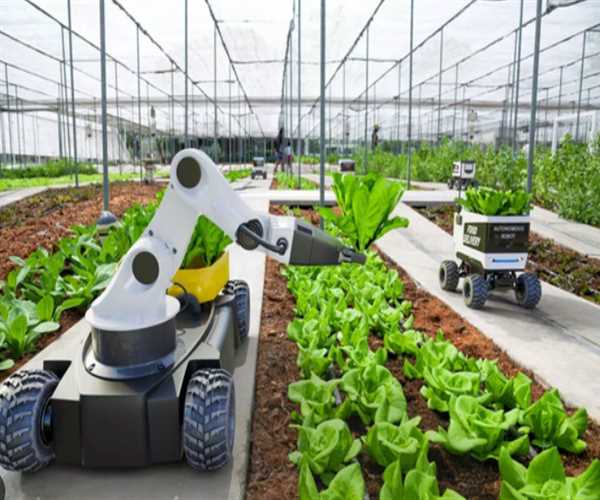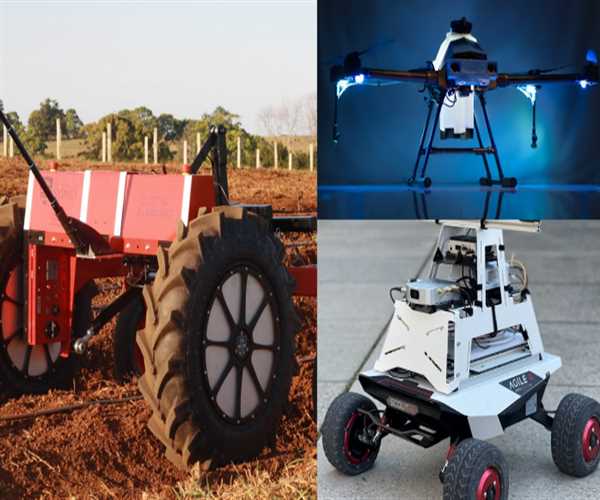Search here

28-Mar-2024 , Updated on 3/29/2024 4:39:32 AM
Us Farmers Are Adopting AI and Robotics before Indians. Why?
There is a silent revolution taking place in American agriculture. Tractors drive themselves, robots crop with laser accuracy, and artificial intelligence systems speak agricultural guidance into farmers' ears. While this may sound like science fiction, the United States agricultural industry has begun to embrace artificial intelligence (AI) and robotics technologies, and is enjoying major benefits. But why does the United States look to be so far ahead of a country like India, which has a strong agricultural past and a large farming population?

Us Farmers Are Adopting AI and Robotics before Indians. Why?
Economic Advantages:
American farms tend to be significantly larger than those in India. This allows for economies of scale, making expensive robotic equipment a more justifiable investment. A single high-tech tractor can efficiently manage vast fields, increasing its return on investment.
U.S. farmers generally enjoy higher profit margins than their Indian counterparts. This financial cushion allows them to take risks on new technologies, knowing that potential initial hiccups won't cripple their livelihood.
Labor Shortages:
The farming population in the United States is becoming older, making it increasingly difficult to attract new generations to demanding farm work. AI and robots offer an interesting answer by automating tasks and allowing human workers to concentrate on other higher-level decisions.
Stricter limits on immigration in the United States have lowered the availability of migrant labor, a traditional supply of workforce for farms. This has further encouraged farmers to look at technology options.
Infrastructure and Support: Reliable internet connectivity is necessary for using AI-powered agricultural devices. While India is making progress in internet connection, rural areas at times fall behind. This lack of consistent internet can be a significant barrier for Indian farmers.
The US government offers various tax breaks and grants to encourage farmers to adopt new technologies. This financial support makes AI and robotics more accessible and reduces the initial investment burden.
Research and Development:
The US has a robust private sector that heavily invests in agricultural research and development. This fosters innovation and creates a constant stream of new and improved AI and robotic solutions for farmers.
Strong collaboration between universities, research institutions, and extension services helps bridge the gap between technological advancements and their practical application on farms. This knowledge transfer is crucial for widespread adoption.
The Road Ahead for Indian Agriculture
While the US may be ahead in the current race, India has immense potential to embrace AI and robotics in agriculture.
There's a need for AI and robotic solutions specifically designed for smaller landholdings, which dominate Indian agriculture. Equipping farmers with the skills to operate and utilize these technologies effectively is crucial.
Expanding internet access to rural areas is essential for seamless integration of AI tools. Government subsidies and loans can make these technologies more accessible to small and medium-scale farmers.
My views regarding this topic:
The use of AI and robots in agriculture is not a competition, but rather a worldwide movement that has the ability to completely change food production. By understanding what's driving the US lead and using targeted solutions, India can close the gap and achieve the effectiveness of these technologies for its massive farming population. This technology has the potential to transform Indian agriculture through boosting yields, improving resource management, and allowing farmers to deal with 21st-century challenges.

CONTENT WRITER
Writing is my thing. I enjoy crafting blog posts, articles, and marketing materials that connect with readers. I want to entertain and leave a mark with every piece I create. Teaching English complements my writing work. It helps me understand language better and reach diverse audiences. I love empowering others to communicate confidently.
Comments
Join Our Newsletter
Subscribe to our newsletter to receive emails about new views posts, releases and updates.
Copyright 2010 - 2025 MindStick Software Pvt. Ltd. All Rights Reserved Privacy Policy | Terms & Conditions | Cookie Policy